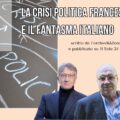Abstract.
Ten years of vast global imbalances have generated large amounts of foreign exchange reserves (EFRs) in export-driven economies. Holding large amounts of reserves has helped governments in Asia– especially in China– to stabilize currency exchange rates by providing a defense against external shocks, and consequently exports performance. Rules aimed at limiting EFRs in order to prevent currency manipulation have been discussed repeatedly, but never implemented. After reviewing the most recent proposal crafted by Bergsten and Gagnon (2013) linking currency manipulation discipline to excessive EFRs, this Policy Brief tackles the other side of the issue. The uncomfortable exposure of sovereign creditors to debt monetization, and likely sovereign default, will abolish their reserves won with difficulty. China’s EFRs corresponds to more than 45 percent of its GDP, and are mostly allocated to sovereign debts. Due to market risks and persistent, loose dollar and euro monetary policies (the two currencies EFRs are mostly denominated in), the value of China’s EFRs is set to deplete over time. Examining the case of China as a major holder of EFRs, this Policy Brief recommends an ex ante, bilateral and confidential diplomacy, aimed at fixing sovereign debt redeployment by swapping foreign reserves in long-term investments in foreign countries. After years of financial bubbles, reverting paper currencies into real economic stuff could offer a template for other EFRs countries to follow.
Executive Summary
- As a result of large trade surpluses and capital controls, China’s official reserves accrued to $ 3.82 trillion (2.82 trillion euros) in 2013, almost twice as large as Japan’s foreign exchanges reserves, the second largest in the world. This wealth is closely centralized, owned, and managed by the Chinese government, and works as a solid defense against external shocks like those experienced by Asian economies in late 90ties. The reserves have served Chinese authorities well as “ballast assets” to stabilize the value of their national currency exchange rate, and have upheld its export-driven economy.
- In 2009, the IMF rang an alarm that countries with excessive reserves were causing spiraling global imbalances and threatening the stability of the international monetary system. Conversely, the Independent Evaluation Office of the IMF showed that excessive foreign exchange reserves were the epiphenomenon rather than the cause of the problems, and current account imbalances were the real things to highlight.
- Recently, during the debate over the Trans-Pacific Partnership, Fred Bergsten and Joseph Gagnon advocated for a “strong currency manipulation discipline” directed toward countries holding excessive foreign exchange reserves, and that failing to comply would cause the U.S. to exit from the final agreement. Yet, claiming that excess foreign reserves are evidence of currency manipulation could turn out to be a red herring. In late 2013, China’s foreign exchange reserves jumped from approximately $500bn to $3.8tn. The growth, which followed a big slow in 2012, was mainly due to speculative capital inflows as investors were betting on a steady rise in the Renminbi.
- From the side of sovereign creditors, EFRs are more of an issue than a blessing. Among other liabilities of holding large piles of foreign currencies, China’s official reserves are exposed to systemic risks arising from the steady debauching of the dollar and the euro resulting from the U.S. Federal Reserve quantitative easing program and the ECB’s intention to follow analogous measures. Since 2005, the Chinese administration has adopted a number of policies aimed at relocating the country’s dollar and euro reserves. Centered on the China Investment Corporation (CIC), the country’s sovereign wealth fund, these investment strategies face a number of political and regulatory challenges that inevitably slow the allocation process. This Policy Paper points at a redeployment of EFRs similar to a debt-to-equity swap (DES) scheme, in an attempt to prompt sovereign debtors to craft bilateral debt redeployment diplomacy.
















